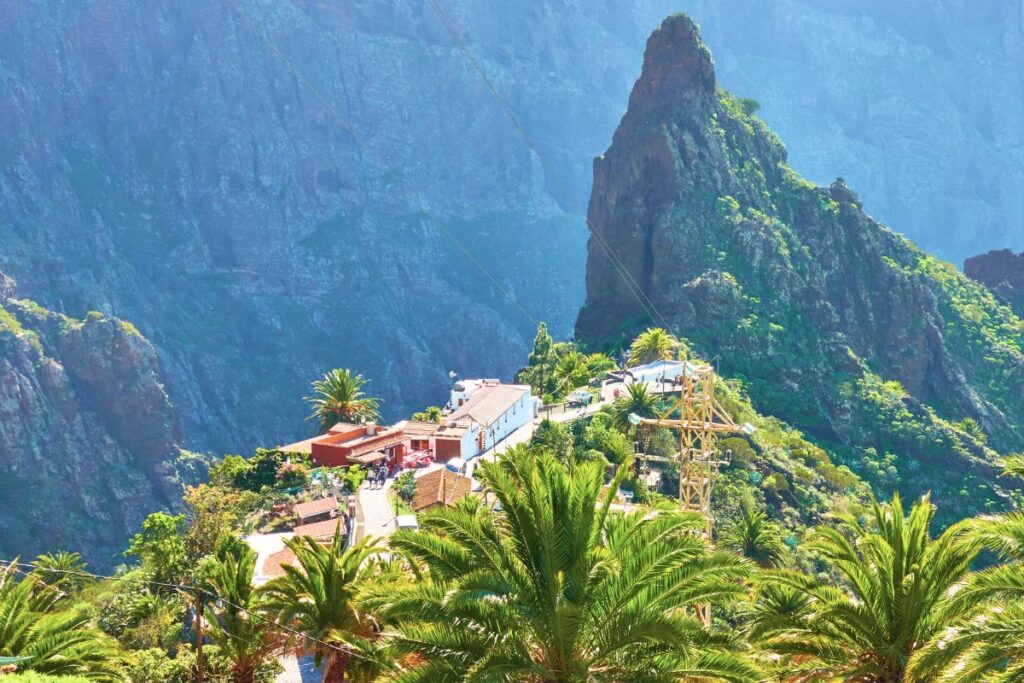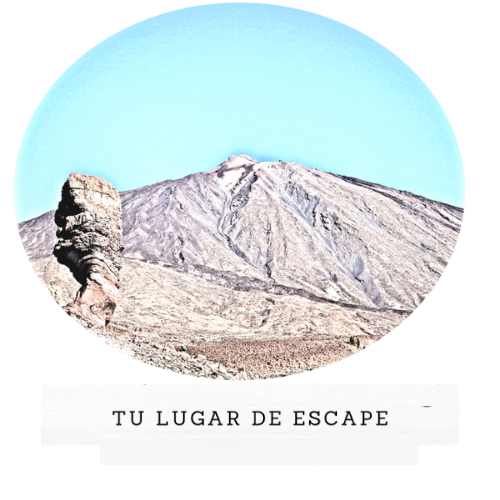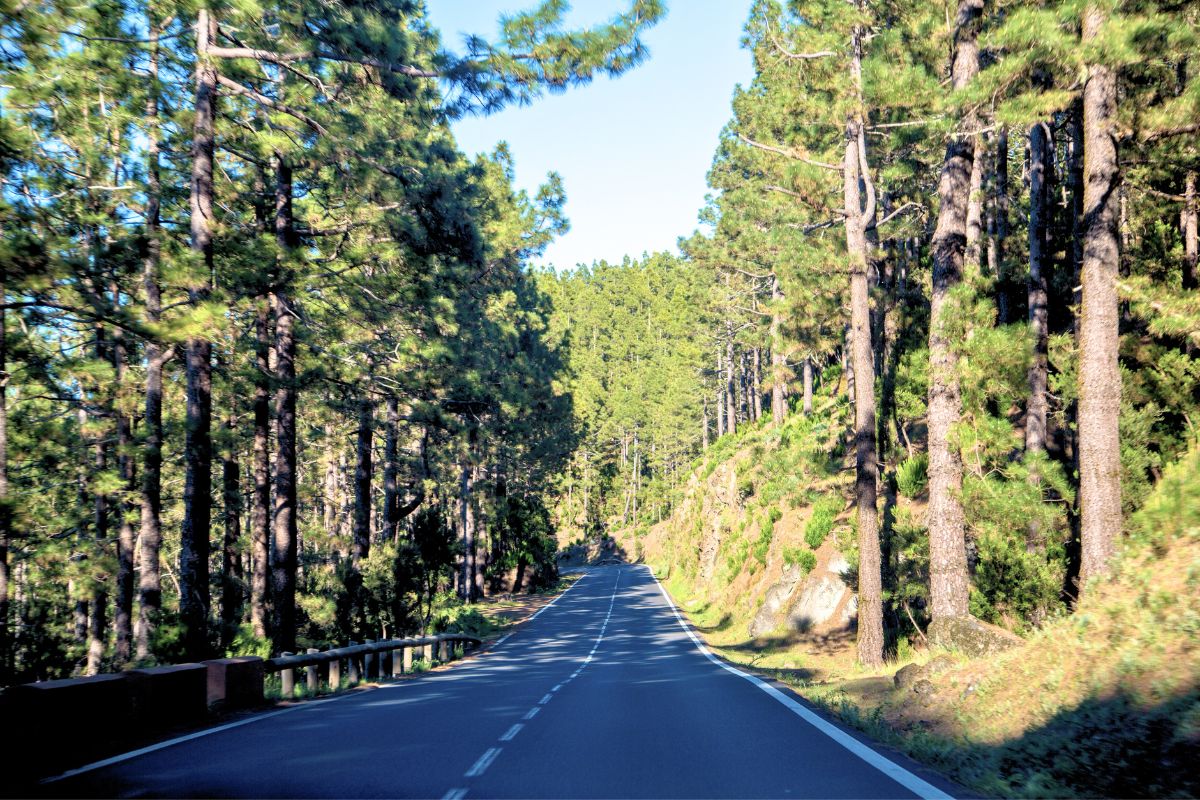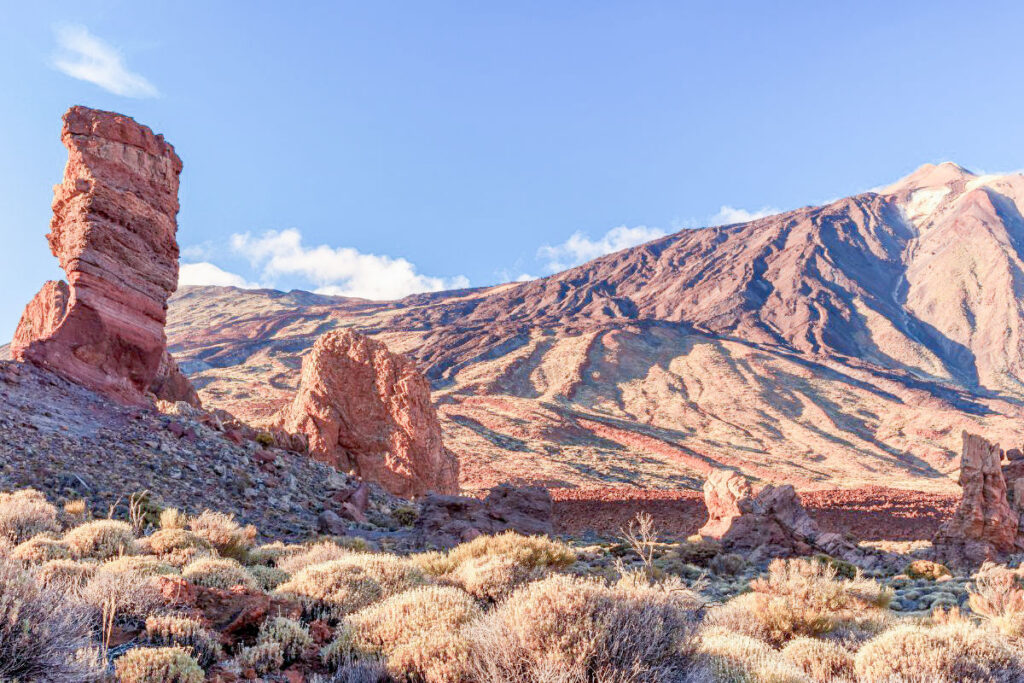
Tenerife Island is a complete and diverse tourist destination, offering black and golden sandy beaches, protected natural landscapes, charming places, and a rich cultural and gastronomic history. Moreover, the island provides a wide range of accommodation, leisure activities, and sports. Join us as we explore everything that Tenerife has to offer.
Geography and Nature of Tenerife Island
Tenerife Island is the most popular tourist destination in the Canary Islands, and it’s not hard to understand why. Its geography is incredibly varied, with coastal areas boasting black or grayish sandy beaches, and lush green landscapes in the north and south.
Coastline of Tenerife Island:
Black or Golden Sandy Beaches Tenerife’s coastline is one of the longest in the Canary Islands and a major attraction for beach lovers. You can find beaches with black or grayish sand, such as El Médano, La Arena, and Playa Jardín, as well as golden sandy beaches like Las Teresitas, one of the most famous beaches on the island.
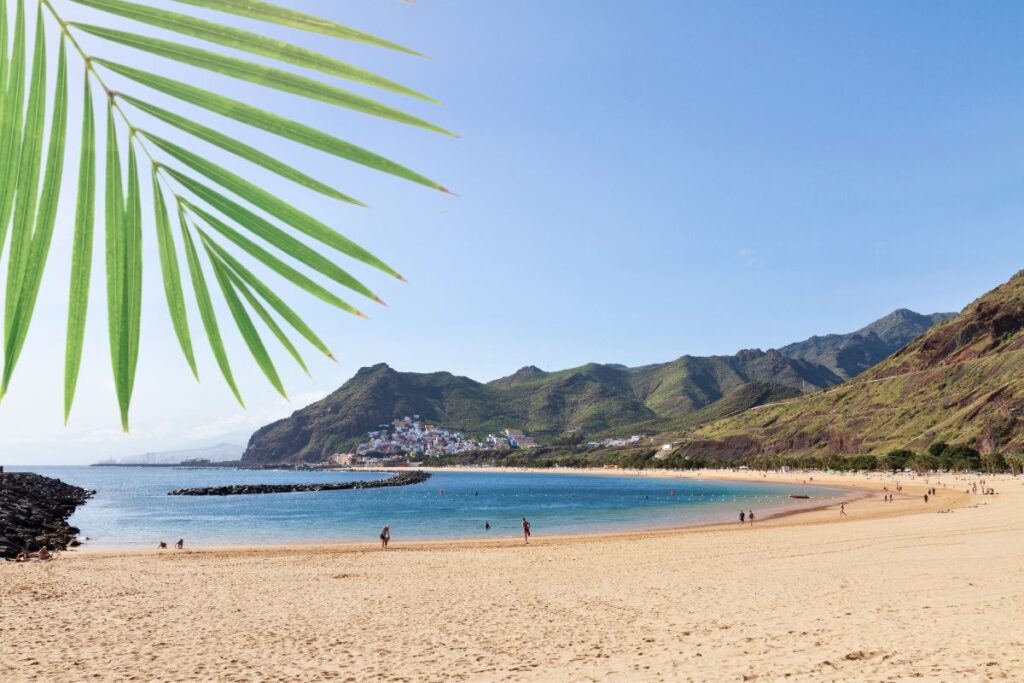
Natural Landscapes of Tenerife:
Lush Vegetation in the North and South The northern part of the island stands out for its lush vegetation, with dense laurel forests, juniper woodlands, dragon trees, and palm trees, forming part of the Anaga Biosphere Reserve. On the other hand, the southern region of Tenerife features arid, volcanic landscapes with plants like tabaiba and cardón. We recommend visiting the Malpaís de Güímar to experience this unique environment.
Protected Natural Areas of Tenerife Island
Tenerife is home to several protected natural areas that invite visitors to immerse themselves in the island’s pristine and wild nature. Among them are the Teide National Park, the Orotava Valley, and the Special Natural Reserve of Malpaís de Güímar, one of the most spectacular lava fields in the world.
Anaga Rural Park:
A Natural Treasure of Tenerife Island The Anaga Rural Park is one of the natural treasures of the island, located in the northeast of Tenerife. Covering an area of 14,419 hectares, this protected space is home to a great diversity of endemic species. The cliffs, ravines, and lush vegetation create a unique landscape that can be explored through various hiking trails.
History and Culture of Tenerife Island
The history of Tenerife Island is marked by the Spanish conquest in the 15th century. The Guanches, the island’s pre-Hispanic population, dressed in animal skins and engaged in pastoralism and agriculture, leading nine small kingdoms on the island. Despite the resistance of the Guanches, the Spanish eventually conquered the island, establishing Tenerife as an important base for maritime routes between Spain and America. The mix of cultures during this time gave rise to a rich cultural heritage on the island.
Spanish Conquest of Tenerife Island
The conquest of Tenerife Island by the Spanish was a long and complex process. The Guanches resisted the invasion but were decimated by diseases brought by the Spaniards. Over several decades, the Spanish built fortifications and formed alliances with some of the Guanche kings.
The Guanches:
Tenerife’s Pre-Hispanic Population The Guanches, the aboriginal population of Tenerife, were a people engaged in shepherding and agriculture. They lived in small mud and stone houses known as «cuvas.» The Guanches dressed in goat and sheep skins and used music and dances in their ceremonies and festivities.
Tenerife in Literature and Art
Tenerife Island has been a source of inspiration for numerous literary and artistic works throughout history. Since the 16th century, many foreign travelers and writers have been captivated by the island’s beauty and diversity, leading to the creation of remarkable works of art. Today, Tenerife continues to attract and inspire artists of all kinds, becoming a hub for creativity and artistic expresión.
Traditional Festivals of Tenerife:
Carnivals and Romerías Traditional festivals play a significant role in the culture of Tenerife Island. The Tenerife Carnivals are renowned worldwide and are filled with music, dance, costumes, and joyful celebrations. Romerías, on the other hand, are religious processions honoring the patron saints of the towns. During these festivities, locals dress in traditional costumes, parade through the streets with the saint’s image, and enjoy traditional food and dancing to lively music.

Tourism in Tenerife Island
Tenerife Island is one of Spain’s most prominent tourist destinations, offering a wide range of leisure activities and experiences for all types of travelers. Are you ready to discover everything that Tenerife has to offer? Keep reading!
Must-See Attractions in Tenerife Island
Tenerife Island is a paradise for nature lovers, with breathtaking places you shouldn’t miss during your visit:
Teide National Park:
A natural treasure and mountainous landscape, it’s the most visited place on the island. Exploring the Teide volcano is an extraordinary experience, as it is the highest peak in Spain, offering spectacular panoramic views and incredible photo opportunities.
Anaga Rural Park:
A unique place to enjoy the island’s most incredible landscapes. This park features several trails where you can go hiking and immerse yourself in nature’s beauty.
Orotava Valley:
A unique landscape in the northern part of the island, characterized by lush vegetation and the charming town of La Orotava, one of the most beautiful on the island.
The Natural Wonders of Teide National Park
Teide National Park is the most important tourist destination in Tenerife Island. Its impressive volcanic mountain landscape and network of trails attract hikers and nature enthusiasts. The Teide Cable Car allows you to reach the summit and enjoy a panoramic view of the island, capturing incredible photos.
Rural Tourism in Tenerife Island
If you prefer to venture away from the tourist areas and immerse yourself in the island’s natural beauty, rural tourism is an excellent option for you. Tenerife offers charming country houses, rural cottages, and farmhouses where you can relax and enjoy the purest form of nature in the tranquility of the island’s typical and hidden villages. You can also visit organic farms that produce wine and cheese.
Activities Along the Coast of Tenerife Island
The coastline of Tenerife Island is another appealing aspect, offering opportunities for water sports, sunbathing, and beach activities. From surfing, windsurfing, and kitesurfing to paddleboarding, there’s something for everyone. You can also take boat tours to see whales and dolphins, and don’t miss the idyllic Las Teresitas Beach in Santa Cruz, with its golden sands.
Loro Parque:
A Must-Visit for Wildlife Enthusiasts A visit to Loro Parque is a truly unique experience. As one of Europe’s most prominent zoological parks, it showcases a wide variety of animal species, particularly birds, reptiles, and mammals. The park also features an aquarium, where you can observe sharks, penguins, and other marine species. Don’t miss the impressive animal shows during your visit.
Gastronomy and Agricultural Production in Tenerife Island
Tenerife Island boasts a rich and diverse gastronomy, influenced by local produce and traditional Canarian cuisine. The island’s volcanic soils and favorable climate create an ideal environment for growing fruits, vegetables, and other agricultural products. Here are some highlights of the gastronomy and agricultural production in Tenerife:
Traditional Cuisine of Tenerife Island Papas arrugadas:
One of the island’s signature dishes, made with locally grown potatoes boiled in saltwater until they become wrinkled. They are typically served with mojo sauces, which are made from garlic, oil, vinegar, and parsley or cilantro.
Gofio: Roasted maize or wheat flour used in various dishes and accompaniments, such as escaldón de gofio, a type of fish and gofio stew.
Cheeses: Tenerife boasts a wide variety of goat and sheep cheeses, such as queso herreño or queso de la palma. These cheeses are often enjoyed with fig jam.
Fish: The island offers a wide range of fresh fish, including cherne, chicharro, sargo, vieja, and jurel, prepared in various ways, such as sancocho, a dish made with salted fish and gofio.
Desserts: Traditional desserts include turrones and polvorones, almond-based sweets, as well as truchas, bienmesabes, and frangollo.
Agricultural Production in Tenerife:
Crops and Honey Agriculture plays a significant role in Tenerife, with notable crops such as bananas and tomatoes. Honey production is also prominent, with different varieties depending on the region of the island. Some noteworthy products include:
Bananas: Tenerife is one of the primary producers of Canary Islands bananas and one of the leading producers in Spain. The production mainly focuses on the southern coast.
Canarian Tomatoes: Tomato cultivation has been historically significant in Tenerife, although its production has decreased in recent years.
Honey: Tenerife’s honey is renowned for its quality and flavor. Notable varieties include heather honey and retama honey.
Territorial Organization and Demographics of Tenerife Island
Tenerife Island is divided into a total of 31 municipalities, with Santa Cruz de Tenerife serving as the capital. These municipalities offer a diverse range of geography and culture, each with its own unique charm.
Municipalities of Tenerife Island:
A Diverse Array of 31 Municipal Terms Among the municipalities, popular tourist destinations include Adeje, Arona, Puerto de la Cruz, and Santiago del Teide. However, there are also other municipalities that possess great appeal, such as Guía de Isora, Buenavista del Norte, and Garachico. Each of them has its own tourist attractions and distinctive character, making them exceptional destinations to visit.
Government of Tenerife Island:
Institutions and Responsibilities The government of Tenerife Island is composed of various institutions and bodies, with the Cabildo and the local councils playing important roles. The Cabildo de Tenerife is responsible for the island’s administration and oversees different areas, including tourism, environment, transportation, and culture, among others. Local councils, on the other hand, are responsible for providing essential services to the community, such as cleanliness and security.
